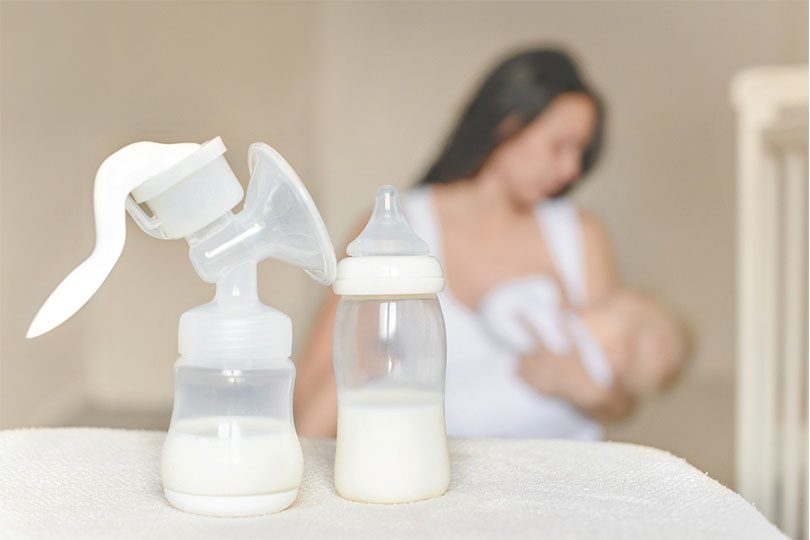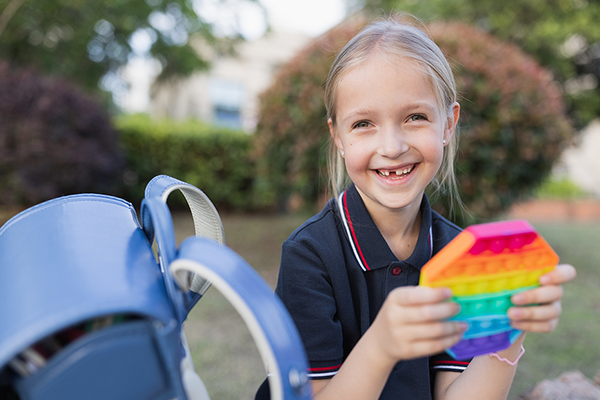As a mother, one of the best things you can do for your baby is to breastfeed, but the reward also comes with its challenges. Our lactation expert, Teresa McCullen, answers the most frequently asked questions about breastfeeding with everything from latch to let-down:
When will my milk come in?
The really neat thing is, your milk is ready and available when your baby is born! The very first milk called colostrum starts being made around the 18 weeks of pregnancy. When your baby arrives, you are making enough milk to fill his tummy, which on the first day is about the size of a grape (5-7 ml), every time he eats. Usually, between the 3rd and 5th day after your baby’s birth, you will notice a second wave of milk sometimes considered “when your milk comes in”.
When should I begin breastfeeding?
The best time to begin breastfeeding is at the beginning! Your baby is born ready to breastfeed. Welcome your baby into the world on your chest, skin to skin with in the first 30 minutes, and you will see that he know just what to do.
Are bottles or pacifiers OK?
Most babies do better if they have 4-6 weeks of breastfeeding before a pacifier or bottle is introduced on a regular basis. Pacifiers can actually hide signs of hunger in your newborn
How do I know that my baby is hungry?
Your baby will give cues or signs to let you know he is hungry. You can follow your baby’s lead by noticing :
- Fluttering eyes
- Sucking on tongue or hands
- Rooting (mouth open, head turning)
- Nuzzling into your breast
- Hand to mouth
If your baby is crying, calm him before trying to feed. It is just as important to know your baby’s cues for fullness. Look for these signs:
- Eating slows down
- Face turns away
- Looks relaxed
- Falls asleep
What is “let-down”?
Another way to describe “let down” is Milk Ejection Reflex (MER). The MER is the way the milk stored in the milk collection cells (aveoli) is released when your baby sucks. The tiny muscles around the milk ducts squeeze your milk out so that your baby can drink. Some women feel a tingling sensation others do not.
How do I latch my baby on correctly?
Holding your baby comfortably is the first step. Many mothers find that the “laid back “ position works very well when starting out. Recline slightly with lots of support for your back and arms, position your baby with his head near your breast (nose lined up with your nipple), with his tummy facing yours. Be sure to support his head and bottom, but let the weight of his body rest on you. Using your free hand, support your breast, squeeze out a little drop of milk and gently rub baby’s lips with your nipple. He will open his mouth for the latch!
How can I tell if my baby is latched on wrong?
Often breastfeeding will be uncomfortable if the latch is wrong. To correct this, compress your breast to increase your milk flow and check your position. Is your baby tummy to tummy? Did you start with his nose nipple level? Things should improve after the first few minutes. If you feel that your baby’s latch does not improve contact your lactation consultant, breastfeeding specialist or baby’s doctor.
How can I tell if my baby is getting the milk?
A good comfortable latch ensures that your baby is getting the most milk. Listen for swallowing. Count diapers. One to three soiled diapers a day during the first 3 days and 4 or more after that is a good goal. Your baby should also have 6 or more wet diapers after the first 3 days.
Is there more than one way to hold my baby?
Yes, there are several that many mothers find helpful. Holding baby across your body with his head in the crook of your elbow (Cradle). Holding baby across your body with his head in resting in the hand opposite the breast to which he is latching (Cross Cradle). Positioning your baby under your arm on the same side as the breast to which he is latching (Football). Use the position that is most comfortable and that lets you get a good latch.
How can I make breastfeeding more comfortable?
When nipple pain during breastfeeding lasts longer than the first few minutes of your feeding, check your baby’s position; reposition or relatch. See a breastfeeding specialist if the pain continues. If you are having breast pain, contact your doctor or lactation consultant.
How long should I plan to breastfeed my baby?
As long a breastfeeding works for you, your baby and your family. The AAP recommends exclusive breastmilk feeding for the first 6 months of your baby’s life; and continued breastfeeding with the addition of other foods until 1-2 years.
I’m having a hard time. What can I do?
Call your lactation consultant, breastfeeding specialist or baby’s doctor.




